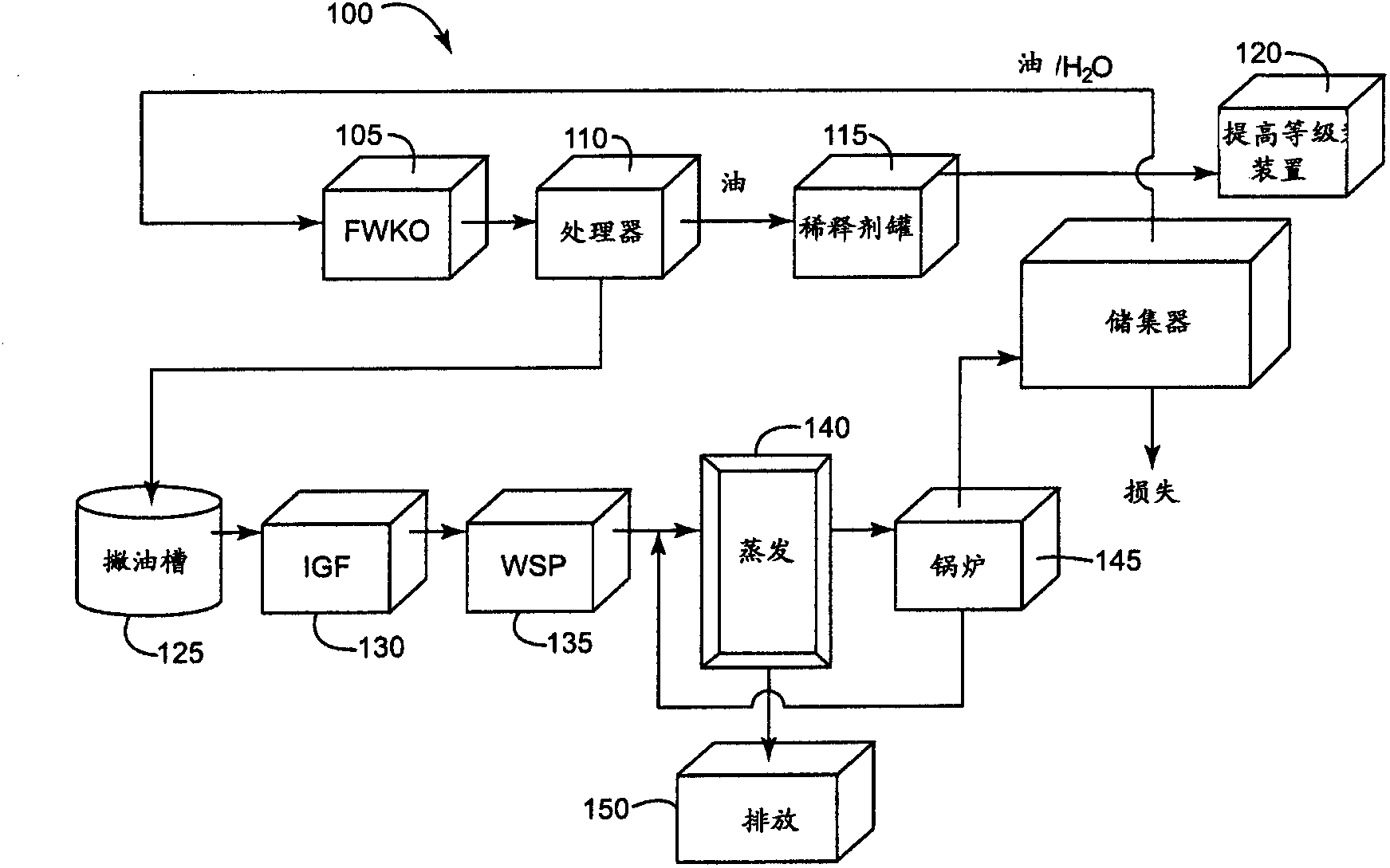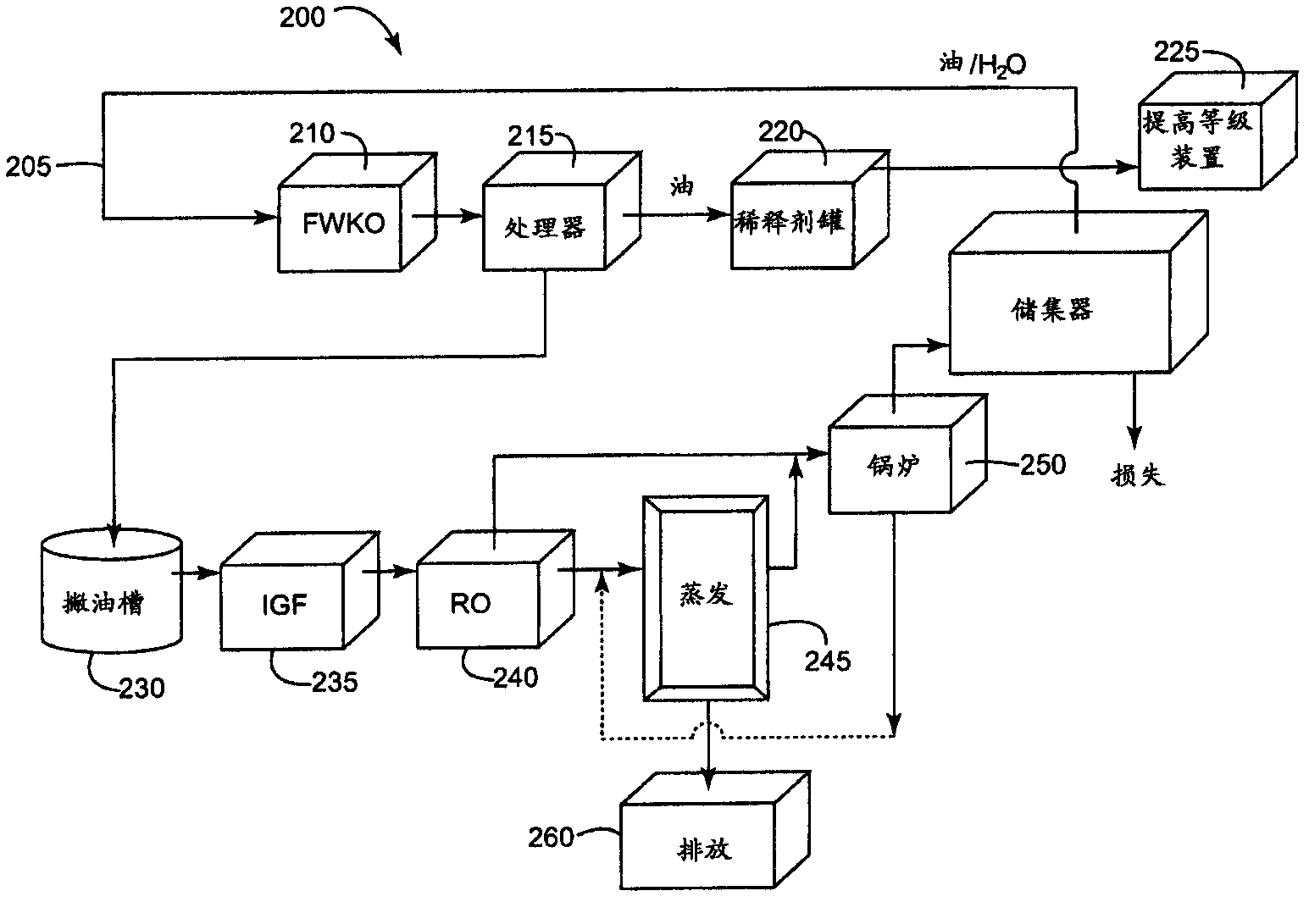Process For Treatment Of Produced Water
A technology for producing water and mechanical methods, applied in separation methods, mining wastewater treatment, water/sewage treatment, etc., can solve problems such as inability to handle processes and abnormality, and achieve cost-effective, small capacity, cost- and energy-saving effects.
- Summary
- Abstract
- Description
- Claims
- Application Information
AI Technical Summary
Problems solved by technology
Method used
Image
Examples
Embodiment Construction
[0018] Unless the context clearly dictates otherwise, the singular forms "a" and "the" include plural discussed objects.
[0019] The modifier "about" used in connection with a quantity is inclusive of the stated value and has the meaning dictated by the context (eg, includes the degree of deviation associated with measurement of the particular quantity).
[0020] "Optional" or "optionally" means that the subsequently described event or circumstance may or may not occur, or that the subsequently identified substance may not be present or may be present, and that the description includes Situations where the substance is present and situations where the time or situation does not occur or where the substance is not present.
[0021] A method of treating produced water in heavy oil production is disclosed comprising: providing an oil / water mixture collected from an oil / water collection well, whereby oil is separated from the oil / water mixture to provide an oil product and contai...
PUM
 Login to View More
Login to View More Abstract
Description
Claims
Application Information
 Login to View More
Login to View More - R&D
- Intellectual Property
- Life Sciences
- Materials
- Tech Scout
- Unparalleled Data Quality
- Higher Quality Content
- 60% Fewer Hallucinations
Browse by: Latest US Patents, China's latest patents, Technical Efficacy Thesaurus, Application Domain, Technology Topic, Popular Technical Reports.
© 2025 PatSnap. All rights reserved.Legal|Privacy policy|Modern Slavery Act Transparency Statement|Sitemap|About US| Contact US: help@patsnap.com



